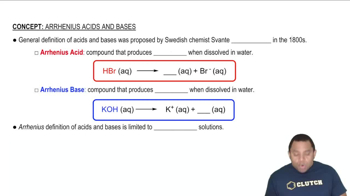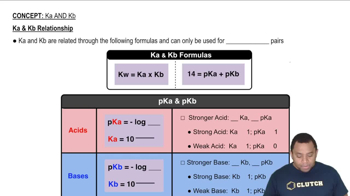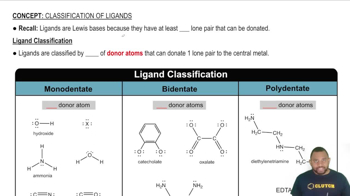Here are the essential concepts you must grasp in order to answer the question correctly.
Acid-Base Equilibria
Acid-base equilibria involve the transfer of protons (H+) between species in a solution. The strength of an acid is quantified by its acid dissociation constant (Ka), while the strength of a base is measured by its base dissociation constant (Kb). In the context of NH4CN, NH4+ acts as a weak acid and CN- as a weak base, influencing the overall pH of the solution.
Recommended video:
Arrhenius Acids and Bases
Dissociation Constants (Ka and Kb)
Ka and Kb are equilibrium constants that describe the extent to which an acid or base dissociates in water. For NH4+, the Ka value indicates how readily it donates protons, while for CN-, the Kb value shows its ability to accept protons. The relationship between Ka and Kb for conjugate acid-base pairs is given by the equation Kw = Ka × Kb, where Kw is the ion product of water.
Recommended video:
pH and Solution Classification
The pH of a solution determines whether it is acidic, basic, or neutral. A pH less than 7 indicates an acidic solution, a pH of 7 is neutral, and a pH greater than 7 is basic. By calculating the Ka for NH4+ and Kb for CN-, one can determine the dominant species in solution and thus predict the overall pH, allowing for classification of the solution.
Recommended video:
 Verified step by step guidance
Verified step by step guidance


